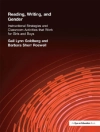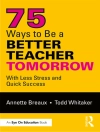‘Equality in Education: Fairness and Inclusion is a scholarly call to action. As the book reminds us, governments come and go and in doing so they busy themselves with policy to mark their patch. Inequality and exclusion remain stubborn foes that are proving to be somewhat impervious to glossy policy pronouncements. The change that Hugo Claus calls for requires careful analysis and bold actions. The editors have assembled a collection of insightful essays that assist in that project. Professor Roger Slee, Victoria University, Melbourne, Australia This book attempts to consider the notion of fairness and inclusion in the context of education from different national perspectives, which is a laudable undertaking. The Editors have managed to put together a diverse, informative, and interesting account of equality and fairness that transcends international borders. The Editors are to be commended on their remarkable achievement in bringing together so many authors to discuss such an important subject, yet producing a cohesive collection of chapters that elucidate the diverse nature of equity in education. Professor Divya Jindal Snape, University of Dundee, UK’
İçerik tablosu
List of Contributors; Acknowledgements; Foreword; Opening Pandora’s Box: Exploring Inequalities in Education; Section One: Theory and Practice; 1. Reimagining Student Equity and Aspiration in a Global Higher Education Field; 2. The Ecology of Inclusive Education: Reconceptualising Bronfenbrenner; 3. Educational Equality, Equity and Sui Generis Rights in Australian Higher Education: Theorising the Tensions and Contradictions; 4. Take Action or Do Nothing: The Educational Dilemma of the Teacher; Section Two: Local Perspective; 5. Towards Quality as an Equity Imperative: Workbook Development, Supply, Utilisation and Quality in the Republic of South Africa; 6. Equity Issues in China’s College Entrance Examination Policy: The Perspective of the Province-Based Enrolment Quota Allocation Policy; 7. Prospects and Challenges in Implementing Inclusive Education Reform in SAARC Countries; 8. Inclusive Education In Bangladesh: Are the Guiding Principles Aligned with Successful Practices?; 9. Higher Education in Ethiopia: Widening Access and Persisting Inequalities; 10. Inequality of Access to English Language Learning in Primary Education in Vietnam: A Case Study; 11. Education Across Borders in Hong Kong: Impacts and Solutions; Section Three: Comparative Perspective; 12. Equity and Access in Higher Education: A Comparative Perspective from Chile and Mongolia; 13. Foreign Language Anxiety in Relation to Gender Equity in Foreign Language Learning: A Comparative Study; 14. E-Learning as a Mediating Tool for Equity in Education in Saudi Arabia and Zanzibar; 15 Closing the Gap: The Move to Equality in Education.












